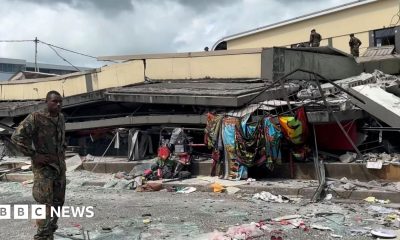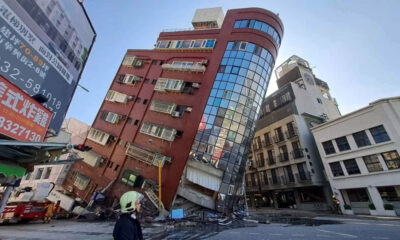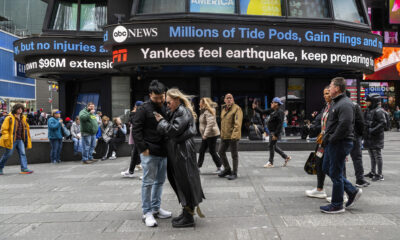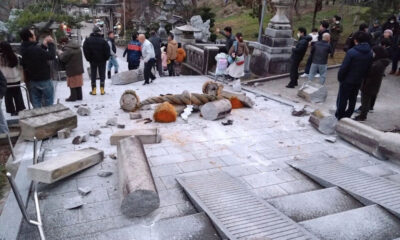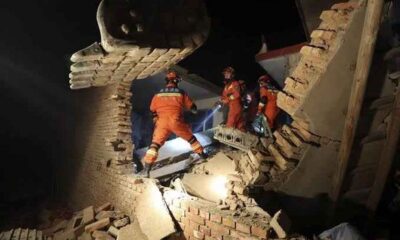Africa
BREAKING: At least 630 dead as powerful earthquake hits Morocco

BREAKING: At least 630 dead as powerful earthquake hits Morocco
A magnitude 6.8 earthquake has hit Morocco, killing at least 630 people, injuring more than 320, damaging buildings and sending terrified residents fleeing their homes into the streets for safety.
Morocco’s state television reported the doubling of the death toll on Saturday morning from overnight, citing the Ministry of Interior. Of those injured, 51 were in a critical condition.
Residents of Marrakesh, the nearest big city to the epicentre, said some buildings collapsed in the old city, a UNESCO World Heritage site. Local television showed images of a fallen mosque minaret with rubble lying on smashed cars.
The earthquake hit shortly after 11pm local time (22:00 GMT) on Friday evening, according to the United States Geological Survey (USGS).
The USGS estimates the epicentre of the earthquake occurred in the Atlas Mountains, some 75km (44 miles) from Marrakesh, the fourth largest city in the country.
Search teams frantically scoured collapsed buildings for those trapped.
“The Royal Armed Forces, local authorities, security services and civil protection … continue to mobilise and harness all means and capabilities in order to intervene, provide the necessary assistance, and assess the damage,” the interior ministry said.
Journalist Noureddine Bazine from Marrakesh described the situation as an “horrific night”.
READ ALSO:
-
Neymar breaks Pele’s Brazil goal-scoring record
-
BREAKING: African Union joins G-20 as permanent member
-
Liverpool captain banned for another match, fined £100k
“It was chaos the moment the earthquake happened, we’re still try to process what happened because it was so sudden,” she told Al Jazeera. “In Marrakesh, the most damage was in the old city because the buildings are prone to collapse because of their fragile state.”
Eid al-Tarazi, a professor of seismology in Jordan, told Al Jazeera “hundreds of aftershocks could happen”.
“People will need to stay away from the buildings that are not strong because they are prone to collapse. We expect the aftershocks could continue for three to four weeks,” he said.
Local media reported roads leading to the mountain region around the epicentre were jammed with vehicles and blocked with collapsed rocks, slowing rescue efforts.
Abderrahim Ait Daoud, the head of a town in the area, told the Moroccan news site 2M that several homes nearby had partly or totally collapsed, and electricity and roads were cut off in some places.
He also said authorities were working to clear roads in al-Haouz province to allow passage for ambulances and aid to populations affected. Large distances between mountain villages mean it will take time to learn the full extent of the damage, he added.
Moroccans posted videos showing buildings reduced to rubble and dust, and parts of the famous red walls that surround the old city in Marrakesh damaged.
Tourists and others posted videos of people screaming and evacuating restaurants in the city. Shocked residents in Marrakesh and Casablanca fled out of buildings and onto the streets.
One Marrakesh resident, Brahim Himmi, said he spotted ambulances leaving the city’s historic old town. He also said building facades had been damaged as the earth shook.
READ ALSO:
- Police arrest man who allegedly shot his pregnant girlfriend in front of commuters
-
Be sensitive to electricity user’s plights, group urges NERC
-
Oyetola faulted by C’ttee he constituted to find out why APC lost 2022 election in Osun
While earthquakes in the region are “uncommon but not unexpected”, one of this magnitude has not been seen in the immediate area in more than 120 years.
“Since 1900, there have been no earthquakes M6 [magnitude 6] or larger within 500km of this earthquake, and only nine M5 [magnitude 5] and larger,” the USGS said on its website.
Most of those previous earthquakes occurred further to the east as well, the agency added.
Friday evening’s earthquake was a relatively shallow one, occurring at a depth of 18.5km (11.5 miles). The USGS explained that “oblique-reverse faulting” in the Atlas Mountains was the cause of the earthquake.
The last major earthquake to strike Morocco occurred in 2004, killing more than 600 people. That temblor, dubbed the al-Hoceima earthquake, was positioned on an active plate boundary on the country’s northernmost coast, bordering the western Mediterranean Sea. It clocked in at a magnitude of 6.3.
An even larger earthquake struck neighbouring Algeria in 1980. Known as the el-Asnam earthquake, the magnitude 7.3 event was the strongest seismic activity the region had seen in centuries. Also originating in the Atlas Mountain range, it levelled houses, leaving 300,000 people on the street and at least 2,600 people dead.
Messages of support began to roll in from around the world on Saturday.
German Chancellor Olaf Scholz posted condolences on X, the platform formerly known as Twitter. Indian Prime Minister Narendra Modi, currently hosting the Group of 20 summit of the world’s largest economies, wrote, “India is ready to offer all possible assistance to Morocco in this difficult time.”
A UN spokesperson said “the United Nations is ready to assist the government of Morocco in its efforts to assist the impacted population”.
BREAKING: At least 630 dead as powerful earthquake hits Morocco
aljazeera
Africa
Nigeria denies alleged plot to destabilise Niger Republic
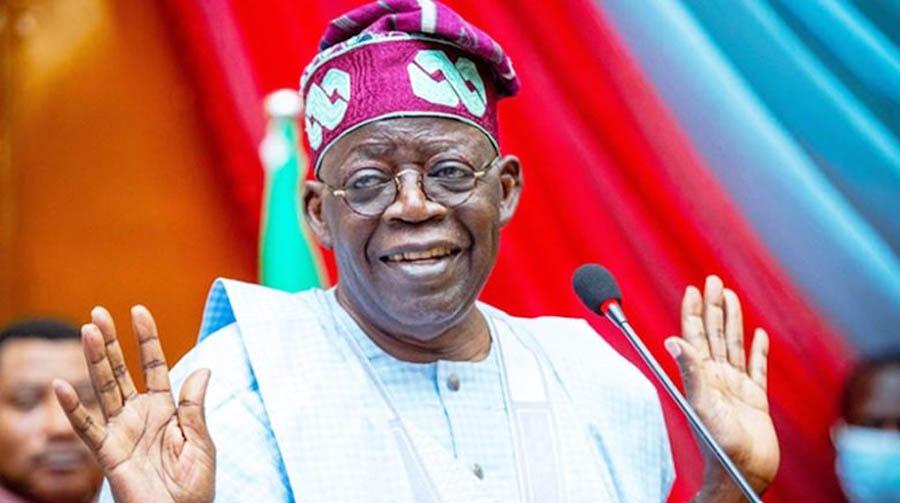
Nigeria denies alleged plot to destabilise Niger Republic
The Federal Government of Nigeria has refuted “in very strong terms” allegations that it is plotting to destabilise neighbouring Niger Republic.
The Nigerien authorities alleged that the Lakurawa terrorist group, with the help of foreign security forces, including Nigerian security forces, were responsible for the attack on the Niger-Benin oil pipeline on December 13, 2024, in Gaya, Dosso Region of Niger Republic.
However, Nigeria, the Ministry of Foreign Affairs, in a statement on Saturday signed by its acting spokesperson, Kimiebi Imomotimi Ebienfa, refuted the allegation.
“The Government of Nigeria condoles with the Government of Niger over the unfortunate attack on the oil pipeline, but informs that the perpetrators were neither backed nor assisted by Nigerian authorities.
READ ALSO:
- Navy arrests 19 Nigerians attempting to reach Europe by hiding on ship
- Troops arrest four Ambazonian rebels in Taraba
- NIMC warns against extortion, reaffirms free NIN enrollment
“The Government of Nigeria is strongly committed to the fight against terrorism and will not condone or support the activities of such groups.
“The Federal Government of Nigeria also expresses very serious concern and states categorically that there are no French military troops in the northern part of the country preparing to destabilize the Government of Niger.
“These allegations are unfounded and should be discarded in their entirety,” the Statement read in part.
It also noted that the relationship between Nigeria and France had always been cordial, saying it is guided by mutual respect, dignity, and non-interference in each other’s internal affairs.
The government of Nigeria assured that it would continue to explore all peaceful means to maintain its cordial relationship with the Republic of Niger for the benefit of the people of both countries.
Nigeria denies alleged plot to destabilise Niger Republic
Africa
Suspected witchdoctors arrested over attempt to ‘bewitch’ Zambia’s President
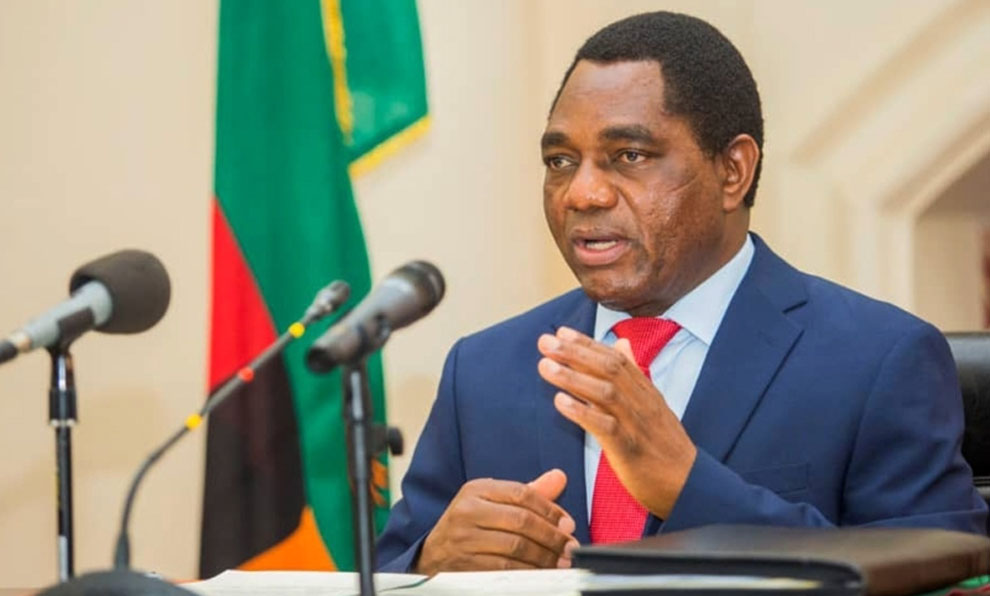
Suspected witchdoctors arrested over attempt to ‘bewitch’ Zambia’s President
Two men were detained in Zambia on charges of being “witchdoctors” tasked with attempting to bewitch the president.
The police stated they had arrested Jasten Mabulesse Candunde and Leonard Phiri in Lusaka.
“Their purported mission was to use charms to harm” President Hakainde Hichilema, according to the police statement issued on Friday.
Many individuals in the southern African country believe in and dread witches.
The police stated Mr. Candunde and Mr. Phiri were hired by Nelson Banda, MP Emmanuel “Jay Jay” Banda’s younger brother.
The MP was reportedly arrested last month in nearby Zimbabwe on robbery allegations, which he denies, but he has not been seen in public since.
He is also accused of escaping from detention in August while waiting to appear in court.
The opposition Patriotic Front (PF), led by z, has previously claimed that the charges are politically motivated.
READ ALSO:
- Farotimi: Advocacy group wants UK college to break ties with Afe Babalola
- Yahaya Bello walks home after release from Kuje prison Friday evening
- Fire kills family of three in Ibadan
Emmanuel Banda, who has been an independent MP since 2021, previously worked with Lungu, who lost the presidency to Hichilema that same year.
The police stated the MP’s younger brother, Nelson, was “currently on the run” in their statement.
Mr. Candunde and Mr. Phiri face charges under Zambia’s Witchcraft Act for “possession of charms,” “professing knowledge of witchcraft,” and “cruelty to wild animals.”
The pair was found with “assorted charms,” including a live chameleon, according to the authorities.
According to the police statement, they claimed they had been given more than 2 million Zambian kwacha (£58,000; $73,000) for their “mission.”
The accused are in jail and will appear in court “soon,” according to the police, although no specific date has been set for the hearing. They have not yet responded in public to the charges.
Suspected witchdoctors arrested over attempt to ‘bewitch’ Zambia’s President
Africa
South African man sentenced to six life terms for killing his relatives
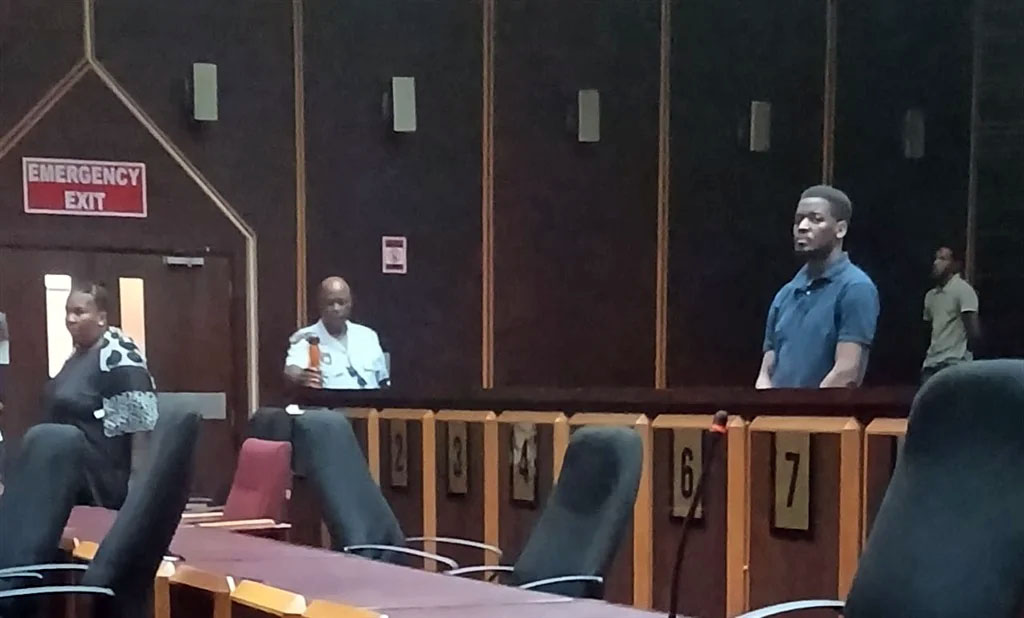
South African man sentenced to six life terms for killing his relatives
-

 Railway18 hours ago
Railway18 hours agoLagos Rail Mass Transit part of FG free train ride – NRC
-

 metro2 days ago
metro2 days agoCourt stops customs from seizing imported rice in open market
-

 metro3 days ago
metro3 days agoFG transfers electricity market regulatory oversight in Lagos to LASERC
-
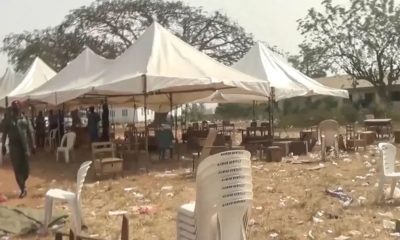
 metro2 days ago
metro2 days agoIbadan stampede: Tinubu orders probe as death toll hits 40
-
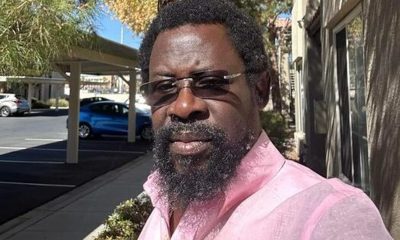
 metro2 days ago
metro2 days agoAfe Babalola: Court grants Dele Farotimi bail, barred from media interviews
-
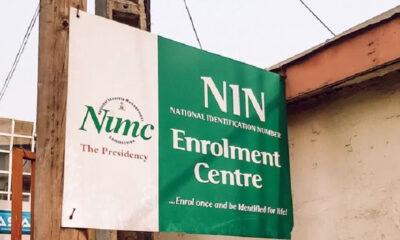
 metro18 hours ago
metro18 hours agoNIMC warns against extortion, reaffirms free NIN enrollment
-

 metro1 day ago
metro1 day agoIbadan stampede: Ooni reacts after arrest of ex-wife
-

 News2 days ago
News2 days agoAdebayo Ogunlesi, 2 other Nigerians make Forbes 50 wealthiest Black Americans list 2024

